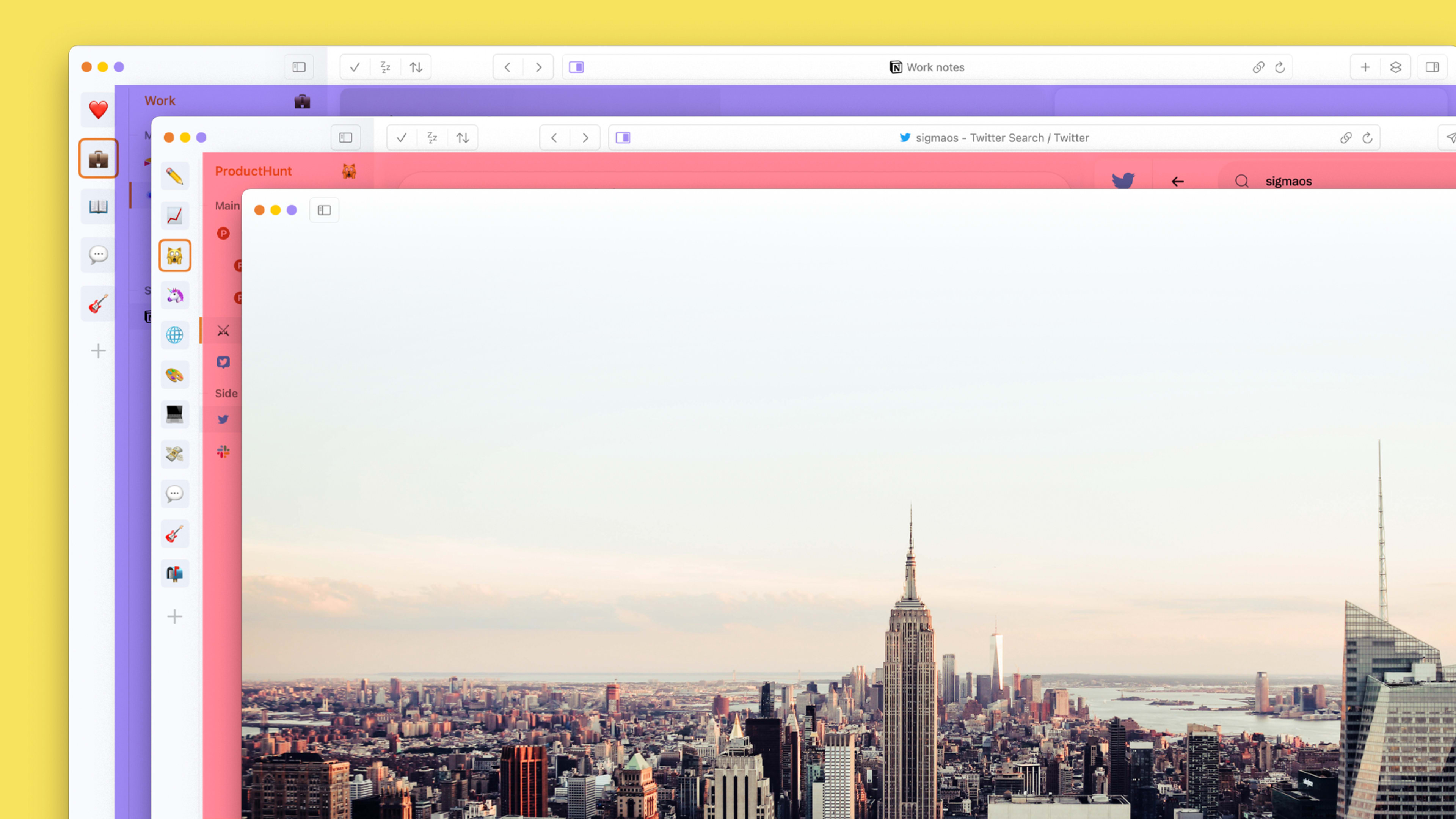SigmaOS isn’t the first startup to try reinventing the web browser, but it might be the weirdest.
Unlike most desktop web browsers, this new Mac app has no horizontal tab bar, no bookmarks, and only one browser window. Some elements of its layout, such as its new tab button, seem deliberately out of place, and it’s missing some features you might consider table stakes, like extension support. It also costs $10 per month after a two-week trial, whereas most browsers are free.
So why did SigmaOS become the most-upvoted entry on ProductHunt last week? Perhaps it’s because we’re constantly overwhelmed by our browser tabs and are desperate for new ways to deal with them. Mahyad Ghassemi, SigmaOS’s cofounder and CEO, has said that he became frustrated by the lack of organization features in traditional web browsers, and decided to develop a radical alternative.
That’s why SigmaOS forces users to imagine browser tabs as tasks and the browser itself as a to-do list. While it has some blind spots and blemishes in its early days, it makes a convincing argument that the way we work on the web needs a rethink.
Strange by design
Instead of windows, SigmaOS has “Workspaces,” appearing as a row of customizable icons along the left side of the screen, and each has its own vertical stack of tabs next to it. Every tab must belong to a Workspace, and the verticality is nonnegotiable. To make up for its lack of multiple windows, SigmaOS offers one concession for split-screen browsing: You can click a button or press Cmd-Right to slide out a second page in a side-by-side view.

To that end, SigmaOS also has a smart way of handling links you click on in other apps, such as Apple Mail or Slack. While most browsers just load those tabs in an existing window, SigmaOS adds them to a separate Workspace called “Shared with me.” That way, random articles from your friends or colleagues don’t clutter up your existing Workspaces.

Naturally, you’ll force yourself to use the keyboard instead: Hitting backslash opens a new page prompt, where you can type an address, search the web, or switch to a tab that’s already open. “D” closes a tab (or marks it as “Done,” in SigmaOS parlance); “H” snoozes a page for later; “M” moves it to another Workspace; and “S” shares it via Messages, Mail, or Twitter, or with other SigmaOS users. If you ever forget a command, hitting Cmd-K brings up a search box for executing tasks and viewing their corresponding shortcuts.
A work in progress
As a rethink of how to work in your web browser, SigmaOS makes a lot of sense. But even when you’re adhering to its rigid structure, the browser sometimes gets in its own way.
For instance, SigmaOS’s multi-select tool lacks a Shift-Click function for selecting a large group of tabs, and the browser’s “subpage” concept is confusing. (You can open a new tab as a subpage inside another tab with your mouse, but moving existing pages into or out of a subgroup requires keyboard shortcuts.) Even the simple act of modifying a URL becomes a chore, because SigmaOS doesn’t expose the URL in its address bar. Instead, you have to click the “copy link” button, paste it in the address bar, and modify it from there.

Ghassemi says the browser uses Apple’s WebKit rendering engine, citing high RAM usage in Blink, the engine used in Chrome and other Chromium-based web browsers. But so far, it’s hard to see that decision paying off. (He notes that SigmaOS is releasing daily updates to improve performance.)
The biggest issue of all, though, is a lack of extension support. That means you can’t autofill passwords, use your favorite ad blocker, fill out masked email addresses with Abine Blur, or save webpages to sites like Raindrop.io or Pocket.

If you’re simply comparing features, a lot of SigmaOS’s organization tools exist elsewhere. Combining Vivaldi’s Tab Stacking feature with its vertical tab layout would offer a similar kind of organization, and you could use its tiling feature or web panels for split-screen web pages. And if you don’t want to switch browsers, Workona offers a browser extension for organizing tabs. (It also uses the term “Workspaces.”)
SigmaOS stands out because it doesn’t relegate those ideas to being optional features or add-ons. It’s an opinionated web browser that forces you to rethink your tab habits, and while I probably won’t stick with it due to its current limitations, it did make me realize that better ways of working on the web are possible.
Recognize your brand’s excellence by applying to this year’s Brands That Matter Awards before the final deadline, June 7.
Sign up for Brands That Matter notifications here.
